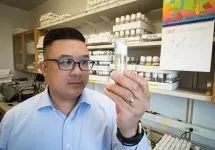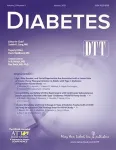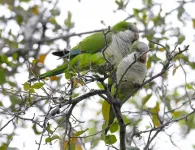(Press-News.org) In 2012, four-year-old Bertrand Might became the first-ever patient diagnosed with a rare genetic disorder called N-glycanase (NGLY1) deficiency. The discovery of this condition and Bertrand's diagnosis allowed doctors to look for other children with the same genetic defect. Since then, more than 60 additional patients have been found. The disease affects every system of the body and is characterized by low muscle tone, seizures, developmental delays, and an inability to produce tears.
Sadly, Bertrand passed away in October at the age of 12. Although his life was cut short, his legacy will benefit children around the world. Through their website, NGLY1.org, Bertrand's parents collect and share a wealth of research and family stories to help educate and inform the community. As more patients have been identified, it's become apparent that even though the same gene is deactivated in all of them, their symptoms and severity of disease vary widely.
Geneticist Clement Chow, Ph.D., assistant professor in the Department of Human Genetics at University of Utah Health, studies NGLY1 deficiency in the fruit fly, Drosophila melanogaster. To understand how the disease symptoms can vary so much, he and his colleagues are hunting for other genes that interact with NGLY1. In a paper published in eLife, Chow reports that his lab has found that one of these interacting genes moderates disease severity. The gene, called ncc69, has a human counterpart called NKCC1. Their experiments showed that NGLY1 chemically modifies NKCC1. Studying this interaction could help illuminate how NGLY1 deficiency affects the body.
Common diseases, such as heart disease or cancer, arise from a combination of many genetic and environmental causes, while rare diseases are more likely caused by a single gene. But every single-gene disease occurs against the individual patient's unique genetic backdrop, a patchwork of different genetic variants inherited from both parents. Children with NGLY1 deficiency start experiencing serious symptoms early in life, suggesting that environmental differences, such as diet, aren't a key factor. More likely, differences in their other genes are influencing the clinical course of the disease.
To search for genes that work together with NGLY1, the researchers needed to use flies with varied genetic backgrounds. Laboratory flies, however, are inbred to be genetically identical. To approximate the natural genetic diversity found in humans, Chow turned to a resource called the Drosophila Genetic Reference Panel. It's a collection of 200 different fruit fly lines, all bred from the same original population--but each one is just a bit different from the others.
"It's like if you sampled 200 Northern Europeans," Chow says. "They'd share lots of genetic variants, but lots of differences as well."
In each strain of flies, Chow and his research team swapped in a non-working copy of the NGLY1 gene, then looked for differences in survival. Strikingly, the flies' genetic background heavily influenced how long the young flies could survive without NGLY1.
"These flies all carry the same disease mutation that's supposed to cause the same disease," Chow says. "Yet here we're seeing that, in some genetic backgrounds, they can't live at all with NGLY1 deficiency. And in some genetic backgrounds, all the flies survived to adulthood."
The researchers analyzed the genes that varied among the flies that survived and those that died, coming up with a list of candidate genes that could be playing a role. They began studying one of these candidates, NKCC1, and soon switched from flies to mice.
"When we hit a wall in what we could do with flies, we decided to turn to the mouse model to try to fully characterize what NKCC1 and NGLY1 are doing to interact with each other," Chow says.
In cells from mice, the researchers discovered that the NKCC1 protein assumes its correct shape through glycosylation, a chemical process that tacks sugar molecules onto the protein. NGLY1 acts to remove these sugar molecules from specific targets.
In the absence of NGLY1, Chow found, NKCC1 was overloaded with extra sugars, reducing activity in the cell by 50%. Without NGLY1, NKCC1 can't do its job properly, which is to move fluids and ions out of the cell.
While application to human disease is still a long way off, the role of NKCC1 makes sense in terms of the symptoms seen in NGLY1 patients. One of the hallmark features of NGLY1 deficiency is the inability to make tears, sweat, and saliva. It turns out that patients who lack NKCC1 also have this symptom. NKCC1 is active in salivary glands, sweat glands, and tear ducts, which supports the idea that the molecule plays a role in causing the symptoms.
"This was all discovered through a genetic screen in Drosophila," Chow says. "This really speaks to the power of using simpler model organisms, especially for rare diseases, where you want to get results faster."
INFORMATION:
-Written by Caroline Seydel
In addition to U of U Health scientists, contributors include researchers from the University of Pittsburgh, The Jackson Laboratory and the Veterans Affairs Salt Lake City Health System.
The study published as "A Drosophila screen identifies NKCC1 as a modifier of NGLY1 deficiency" and was supported by the National Institutes of Health, Might Family, and the Glenn Foundation for Medical Research.
A recent study of drugged driving, by a team of University of Cincinnati researchers, shows that a sizable percentage of individuals reported the use of marijuana and other illicit drugs while operating behind the wheel.
"We need to focus our efforts on drugged driving, in addition to drunk driving, because drugged driving causes such a high level of fatalities, says Andrew Yockey, a doctoral student in UC's College of Education, Criminal Justice and Human Services and researcher at the UC Center for Prevention Science.
Yockey is lead author on the study ...
New Rochelle, NY, January 26, 2021--Hybrid closed-loop insulin therapy improved glycemic control in adolescents and young adults with type 1 diabetes. These outcomes, derived from the International Diabetes Closed-Loop (iDCL) Trial, are reported in the peer-reviewed journal Diabetes Technology & Therapeutics (DTT). Click here to read the article now.
Adolescents and young adults with a mean age of 17 years were randomly assigned to a closed-loop control (CLC) insulin delivery system or a sensor augmented pump (SAP) with a continuous glucose monitoring system over a 6-month period. The Time in Range increased by 13% for the CLC group, compared to a decrease of 1% with SAP, for a group ...
Burning fossil fuels has long powered world economies while contributing to air pollution and the buildup of greenhouse gases. A new analysis of nearly two decades of satellite data shows that economic development, fossil-fuel combustion and air quality are closely linked on the continental and national scales, but can be decoupled at the national level, according to Penn State scientists.
"We know air pollution and economic development are linked, but we want to know how tightly and whether our actions can change this," said Ruixue Lei, a post-doctoral researcher in the Department of Meteorology and Atmospheric Science. "We found they are not inherently bonded and can be decoupled under favorable policies."
While previous research has explored the connections between air ...
Researchers at Weill Cornell Medicine and Cornell University's Ithaca campus have developed a new computational method for studying genetic and environmental interactions and how they influence disease risk.
The research, published Jan. 7 in The American Journal of Human Genetics, makes the process of finding these interactions much less difficult and demonstrates their importance in determining body mass index and diabetes risk.
"Our study demonstrates that your genes matter and the environment matters and that the interaction of the two can increase risk for disease," said co-senior author, Dr. Olivier ...
Heart disease is a killer threat for southern sea otters feasting on domoic acid in their food web, according to a study led by the University of California, Davis.
The study, published in the journal Harmful Algae, examined the relationship between long-term exposure to domoic acid and fatal heart disease in southern sea otters, a threatened marine mammal.
"Sea otters are an amazing indicator of what's happening in the coastal environment, not just to other marine animals, but to us, too, especially on the issue of domoic acid," said Christine K. Johnson, director of the EpiCenter ...
To enter the world of the fantastically small, the main currency is either a ray of light or electrons.
Strong beams, which yield clearer images, are damaging to specimens. On the other hand, weak beams can give noisy, low-resolution images.
In a new study published in END ...
MAPUTO, Mozambique (January 26, 2021) - A team of marine scientists led by the Wildlife Conservation Society (WCS) has confirmed that southern Africa's most threatened endemic shark - the Critically Endangered shorttail nurse shark (Pseudoginglymostoma brevicaudatum) - has been found to occur in Mozambique; a finding that represents a range extension of more than 2,000 kilometers (1,242 miles).
Publishing their findings in the journal Marine Biodiversity, the team said that the discovery was based on several records of the shark including underwater video surveys collected in 2019, recent photos of shore-based sport anglers' catches, and the identification of a specimen collected in 1967.
The ...
A hormone commonly associated with sleep-wake regulation has been found to reduce cysts in fruit flies, according to Concordia researchers. It's a finding that may affect the way we treat some kidney diseases and reduce the need for kidney transplants.
In a new paper published in the journal END ...
STUDY PROFILES IMMUNE CELLS FIGHTING COVID-19, MAY HELP GUIDE NEXT-GEN VACCINE DEVELOPMENT
Media Contact: Michael E. Newman, mnewma25@jhmi.edu
Even as the first vaccines for SARS-CoV-2, the virus that causes COVID-19, are being distributed, scientists and clinicians around the world have remained steadfast in their efforts to better understand how the human immune system responds to the virus and protects people against it. Now, a research team -- led by Johns Hopkins Medicine and in collaboration with ImmunoScape, a U.S.-Singapore biotechnology company -- has published one of the most comprehensive characterizations to date of a critical contributor to that protection: ...
Biologists often study animal sociality by collecting observations about several types of behavioral interactions. These interactions can be things like severe fights, minor fights, cooperative food sharing, or grooming each other.
But to analyze animal behavior, researchers need to make decisions about how to categorize these interactions and how to code these behaviors during data collection. Turns out, this question can be complicated.
Researchers at the University of Cincinnati dug into this tricky question while studying monk parakeets. In new research, published in the journal Current Zoology, the team asked: How do you properly categorize two seemingly similar behaviors? The study was led by UC ...






